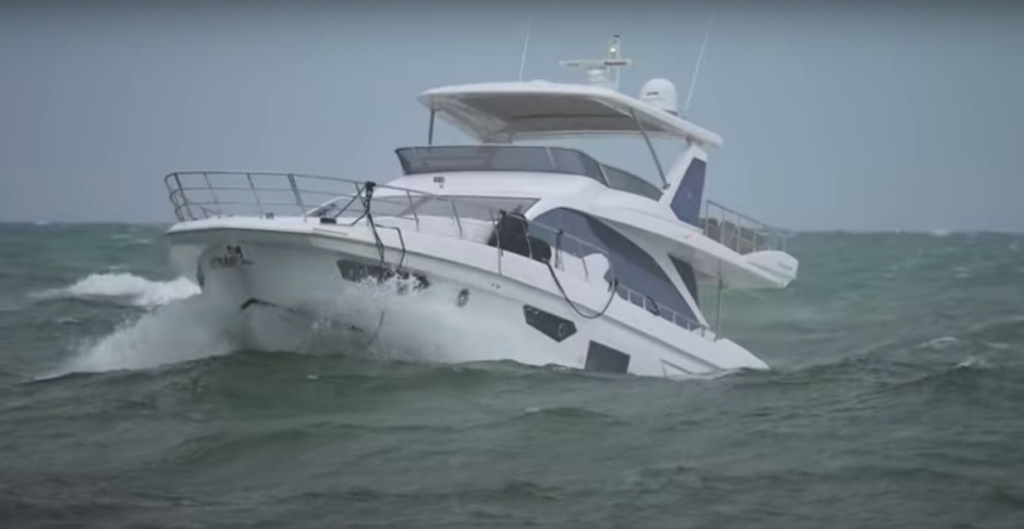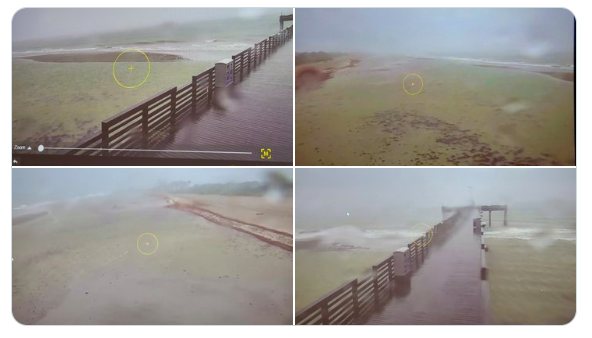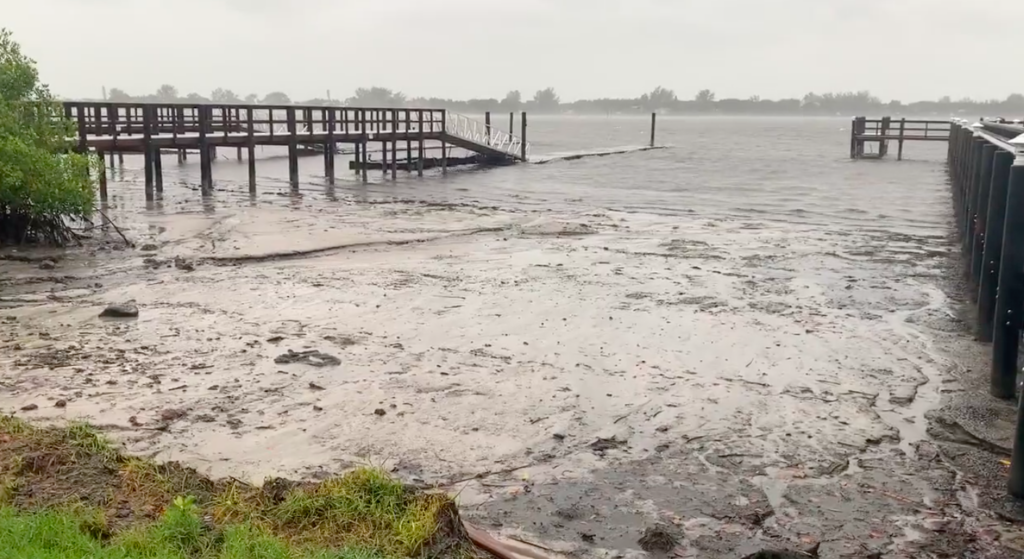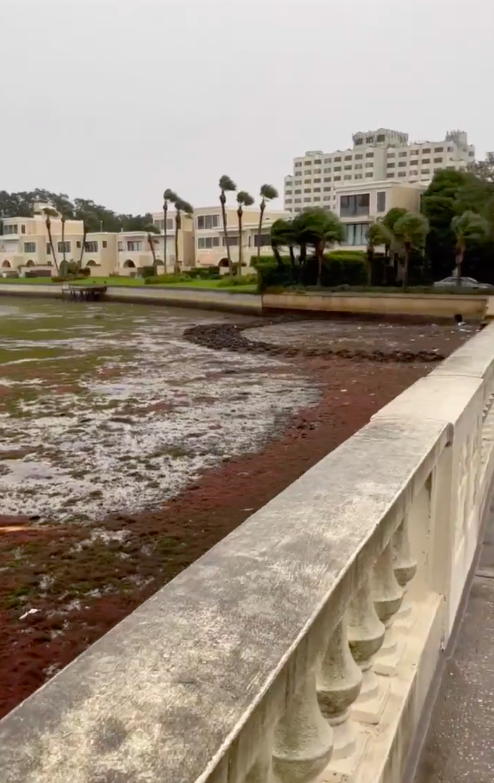Watch: Flood waters and horrific damage as Hurricane Ian wrecks Florida

Earlier this week MIN announced that IBEX organisers cancelled the Florida marine trade show as Hurricane Ian was predicted to devastate the state. Footage and images have started to surface of the devastation in Tampa (the site of IBEX) and further around Florida.
The storm hit Cuba before making landfall as an “extremely dangerous” Category 4 storm in southwest Florida shortly after 15:00 Wednesday (Eastern Time Zone). By 23:00, the National Hurricane Centre said wind speeds had dropped, and it was downgraded to a Category 1 hurricane.
At this time, Ian’s centre was about 70 miles south of Orlando and around 80 miles southwest of Cape Canaveral. Moving north-northeast at about 8 mph, the storm had maximum sustained winds of 90 mph, with higher gusts, late Wednesday night according to CNN.
In coastal Florida, desperate people posted to Facebook and other social sites, pleading for rescue for themselves or loved ones, says the Associated Press. Debris-covered water was surging toward homes’ eaves and a coastal sheriff’s office says that it was getting many calls from people trapped in flooded homes.
Tampa PD urged people to stay inside as they released images of storm damage.
𝑾𝒆 𝑪𝑨𝑵𝑵𝑶𝑻 𝒔𝒕𝒓𝒆𝒔𝒔 𝒕𝒉𝒊𝒔 𝒆𝒏𝒐𝒖𝒈𝒉: Stay Off The Roads ❌ Stay Indoors✅. TampaPD Officers saw a traffic light 🚦 come crashing down in front of their car in #YborCity. There are live wires down. This is 𝙉𝙊𝙏 the time to venture out. #YourTampaPD #hurricaneian pic.twitter.com/t8pOii18Pf
— TampaPD (@TampaPD) September 29, 2022
An estimated 2.2 million customers in Florida are without electricity, according to PowerOutage.us.
This timelapse of the storm was taken in Fort Myers.
I’ve been capturing video from this webcam in Fort Myers all day and I’ve put it into a Timelapse. Check out the storm surge rushing in! Crazy. #Ian #flwx pic.twitter.com/lj7a1wThga
— Brennan Prill (@WxBrenn) September 28, 2022
“Water levels are quite high in those areas still and so it will take some time for the water to recede,” says Cody Fritz, storm surge specialist at the National Hurricane Centre.
“There’s still plenty of onshore flow along the coast keeping water levels elevated, so while the peak surge values will decrease here relative to previous value, I still expect waters to be up for awhile and the need to maintain the storm surge warnings,” Fritz says.
“The Gulf of Mexico is literally moving inland across the beaches into the communities,” Erik Salna, associate director of the International Hurricane Research Centre told the BBC. “That invasion of water is just hard to even imagine until you see it for real.”
Statistically and historically, water kills more people than wind, Salna says. And Ian is “a worst-case scenario amount of water”.
Just hours before the hurricane arrived, water from beaches up and down the coast was sucked away.



The phenomenon is called a negative storm surge — also known as a blowout tide — and it’s what happens when offshore hurricane winds push water from the coast, leaving beaches desolate, says the Washington Post. Blowout tides are the opposite of storm surge, which fiercely pushes water over the shore.
As with the similar telltale signs of a tsunami, experts warn that if ocean water drains away suddenly, get as far away from the water as possible.
(Image courtesy of Christina Cabino Weldon on Bayshore.)
Footage shows those ‘braving’ the elements across Florida, including these swimmers at Fort Myers.
New video just in from Fort Myers, FL shows swimmers getting into the storm surge as Hurricane #Ian approaches.
— Zach Covey (@ZachCoveyTV) September 28, 2022
This is EXTREMELY dangerous. I can’t believe I have to say this…. DO NOT GET INTO THE WATER! pic.twitter.com/jsoUPvX8uC
And this wakeboarder
Here the power of nature is on display at Haulover Inlet as the category four storm approached and some boats were still attempting to head out to sea, while others rushed in.
As it passed 01:00 in Florida, the full extent of damage from Hurricane Ian is likely to remain unknown for some hours, with power and communications disrupted in many areas and some emergency responders forced to wait for the return of daylight and safer conditions before beginning a full search and rescue operation, says the Guardian.
Storm surge 18 ft , hurricane Ian fort Myers Beach Florida…Homes underwater .#Ian #hurricane #Florida #StormSurge #HurricaneIan #naplesflorida #naples #Hurricane #HurricaneIan pic.twitter.com/A2NbobHa5J
— Anil Kumar Verma (@AnilKumarVerma_) September 29, 2022
While no deaths have yet been reported in the US, Ian killed two people in Cuba and a boat carrying 23 Cuban migrants sank Wednesday in stormy weather east of Key West.
Catastrophic flooding in #FortMyers Beach, Florida, from Hurricane Ian.#Naples #Florida #HurricaneIan #Ian #naplesflorida #Bonita #floridahurricane #Ian2022 #PineIsland #stormsurge #Storm #Hurricane #Florida #Orlando #HuracanIan pic.twitter.com/nyLye3oolz
— Siraj Noorani (@sirajnoorani) September 29, 2022
In February 2021, Storm Eunice battered Britain just two days after Storm Dudley. A Maserati trimaran was ‘thrown into air’ by violent storm at Italian marina in August 2021.










